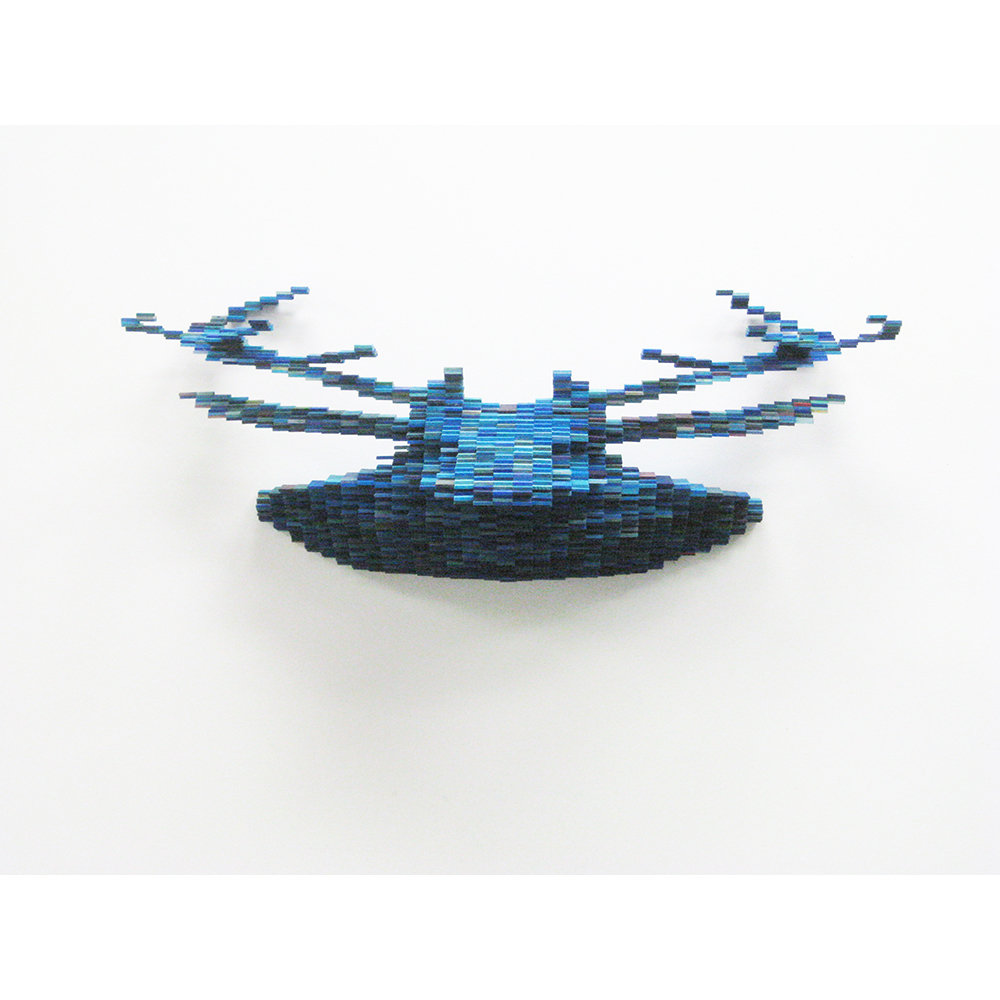Artwork Description
Shawn Smith – Squish
Dimensions: 14 x 35 x 17″ sculpture
Year: 2018
Medium: plywood, ink, acrylic paint
Shawn Smith’s “Squish” renders a compressed deer to touch on the intersection between technology and human life, perhaps referencing the stretched skull located in Hans Holbein the Younger’s painting The Ambassadors. In Holbein’s 1533 work, the skull, which is only fully visible from a particular angle, represents a memento mori, or a reminder of human mortality. Smith uses a similar technique to express the fragility of natural life and the impending extinction of many species, including the common deer.
Shawn Smith’s work focuses on themes of labor, technology, and science, where each of his sculptural pieces depicts a species facing extinction through human influence. Smith believes that the increasing quantities of technology in our day-to-day lives has begun to set the standard for our inter-species relations, through which we often view animals in the light of a screen rather than in a natural environment. By pixelating his works, Smith both demands acknowledgement for the animals decreasing numbers and for viewers to question their relationship with technology. Smith’s works cannot be viewed accurately through images, but rather, must be seen in person to understand the craftsmanship required to construct them and their full range of depth and color. This interacts with his conceptualizations of ‘detachment’, where attachment to his work is contingent upon reality rather than technological encounters. Smith also draws on the idea of process within his oeuvre by playing with construction and deconstruction; each of his sculptural works are reduced to mere pixels, yet are made from individually hand-cut and dyed blocks. Consistent with his participation in Turner Carroll’s Science as Art exhibition, Smith casts himself in the role of ‘artist as alchemist’, drawing on precise measurements to render visual representations of dying species in a way that positions him as an artistic and mathematical creator.
by Keira Seidenberg, Art History/Gender Studies student, McGill University

